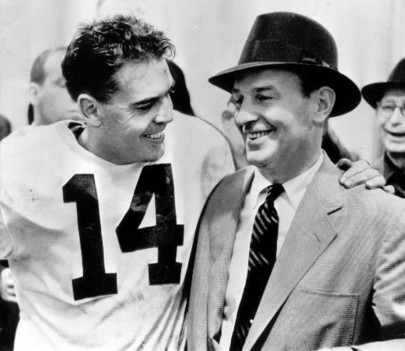
When NFL commissioner Roger Goodell announced plans for possibly expanding the regular season to 18 games, several experts said the change was on the horizon years ago. Not only does it increase revenue, but it may draw even more fans in the long run.
Extending the schedule of the regular season is nothing new for the NFL. Since 1922, the regular season went from 11 to 12 games in 1935, then to 14 games in 1961, to the current 16 game schedule in 1978. The 32 year gap now represents the longest time the league has gone without adding more games.
One of many problems in the Goodell plan is his wanting to shorten training camps and exhibition seasons. Though seasons will now run well into February under an 18 game schematic, the loss of training camp time could greatly hinder the league in both fundamentals and character.
The Pro Football Hall of Fame is supposed to represent the greatest player to have ever stepped on the gridiron. Many men in those hallowed walls played for the NFL, and many made the league via their play in a training camp. Coming from virtually nowhere, their names are now as prevalent as the pads, goalposts, and football itself.
In 1955, the Pittsburgh Steelers cut their ninth round draft pick in training camp. The young man hitchhiked home to save the few dollars he had earned for his family. He worked construction and played weekend semi-pro football the rest of the year.
He joined the Baltimore Colts in their 1956 training camp and made the team. Eventually he won three championships and went to the Pro Bowl ten times. Johnny Unitas, a man many consider the greatest quarterback in football history, may not have achieved all of this success without a real training camp to participate in.
Dick "Night Train" Lane is widely considered one of the greatest cornerbacks in NFL history. He made the Lo Angeles Rams in 1952 as a 24-year old man who just left a job at a factory and decided to try football. He hadn't played the sport since he was in junior college for one season over five years earlier.
He wanted to play wide receiver, but the Rams already had future Hall of Famers Elroy "Crazy Legs" Hirsch and Tom Fears there. The Rams moved him to cornerback and he intercepted 14 passes that year. Not only is it a rookie record, but it is the most in the history of professional football for one season.
Though Lane was a notoriously hard hitter, and expert of the horse collar tackle, he finished with 68 interceptions and seven Pro Bowls in his Hall of Fame career. A career that probably would not have been enjoyed by millions if he had to participate in the shortened version of the Goodell training camp.
One lamentation of the NFL historian is the erosion of fundamentals the last decade. More players lead with their heads, going for the kill shot. With defenses castrated by runs heavily favoring the offensive side of the ball, the kill shot has become more part of the game than the zone defense.
Defenses also lean heavily on the zone defense because of the receivers allowed to run virtually unimpeded off the line of scrimmage and few cornerbacks left have solid enough fundamentals to play man to man defense.
Part of the reason is that the NCAA has drastically cut practice time down each week. Players get less time to learn their positions, which is evident in translation on the professional gridiron. Agents cal also keep many players from jumping right in as they negotiate contracts, which also inhibits the learning curve.
Goodell's plan to shorten training camps puts a hindrance on the unknown. Teams will more likely keep the high round draft choice over the undrafted player who outperforms him because of moneys invested. That means there will be several excellent players looking for jobs.
This type of development bodes well for the Canadian Football League, United Football League, and even the upstart All-American Football League that looks to debut in 2011. Though there are no guarantees a Unitas, Lane, or countless other players with similar stories, will come out in the next few years. However, each decade there are players who appear from off the grid to make a significant impact on the game.
You will probably see less of these, the All-American kid from parts unknown walking onto any NFL field and becoming a legendary part of the fabric of a game millions consider a religion. Greed over quality. This what the NFL has been known for the past few decades. It seems is it Goodell's mission to drive that message home into the wallets of the viewers while offering less as a return.































